Calathea Sanderiana
Calathea Sanderiana
Rated 4.9 ⭐ by 100 satisfied customers on Google
Currently in stock
Couldn't load pickup availability
- Home delivery throughout Belgium.
- Collection in Leuven possible
- the lively dancing leaves
- lifelong help for all your plant questions
A Calathea Sanderiana is a real eye-catcher in your living room. Its dark green leaf patterns with light green stripes create a tropical feel in any room. This plant is ideal for those just starting with houseplants and still want to see results without too much effort.
Thanks to its elegant leaves, the Calathea Sanderiana instantly creates a pleasant atmosphere. Pair it with a Monstera Minima or a robust Dracaena Marginata, for example, to create a green eye-catcher in your interior. It also feels perfectly at home in a shady corner, just like our Asplenium Parvati .
Your Calathea Sanderiana will arrive in a high-quality pot, perfectly suited to our collection of pots for houseplants . This way, you can give it a beautiful spot right away.
How to care for a Calathea Sanderiana
Watering: Calathea Sanderiana
The Calathea Sanderiana prefers an evenly moist substrate. Water about once a week, depending on the room temperature and humidity. Always check that the top centimeter of soil feels dry before watering again. Preferably use rainwater or filtered water to prevent limescale buildup.
Light: Calathea Sanderiana
Calatheas love indirect light. Never place your Calathea Sanderiana in direct sunlight, as this can burn the leaves. A bright spot, for example, near a northeast-facing window, is ideal. This way, your plant gets sufficient light without direct, irritating sunlight.
Soil and nutrition
Calatheas thrive in airy, moisture-retaining potting soil. A mix containing coconut fiber and perlite, for example, helps prevent overly wet areas. Fertilize every other week during the growing season (spring and summer) with a liquid houseplant food to keep the plant strong and healthy.
Common problems and solutions
Yellow leaves
Yellow leaves are often caused by too much or too little water. Check your watering routine and adjust if necessary. Remove discolored leaves with clean shears to avoid hindering new growth.
Plant dripping water
If you drip water your Calathea Sanderiana, it may be a natural reaction (guttation). This occurs especially at night when humidity is high. Ensure good ventilation and reduce watering slightly if the dripping becomes excessive.
Pests
Spider mites and aphids can occasionally nest on the veins. Rinse the leaves regularly with lukewarm water or use our jungle mist spray . Add a few drops of green soap for added effect.
Roots emerge from the soil
When the roots grow out from the bottom of the pot, it's time to repot. Choose a slightly larger pot from our selection of flower pots for sale in Leuven . Also, refresh the potting soil for good nutrition.
Brown edges on the leaves
Brown edges usually occur due to air that is too dry or too much lime in the water. Increase the humidity with a humidifier or group plants on a tray with hydroponic clays. Use rainwater or soft water to avoid unsightly edges.
Is the Calathea Sanderiana poisonous?
The Calathea Sanderiana is safe for both humans and pets. It's a non-toxic houseplant, ideal if you have pets or children. Also check out our collection of non-toxic houseplants safe for pets for more ideas.
Species within the Calathea family
There are several beautiful varieties to expand your collection:
- Calathea Orbifolia
- Calathea Triostar
- Calathea White Fusion
- Calathea Zebrina
- Calathea White Star
- Calathea Warscewiczii
- Calathea Makoyana
Want to learn more about other tropical foliage ornaments? Discover our Alocasia Zebrina or the striking Aglaonema Silver Bay for a complete urban jungle.
With these tips, your Calathea Sanderiana will become a radiant focal point with minimal effort. Order today and enjoy those dancing leaves in your own home!
Share

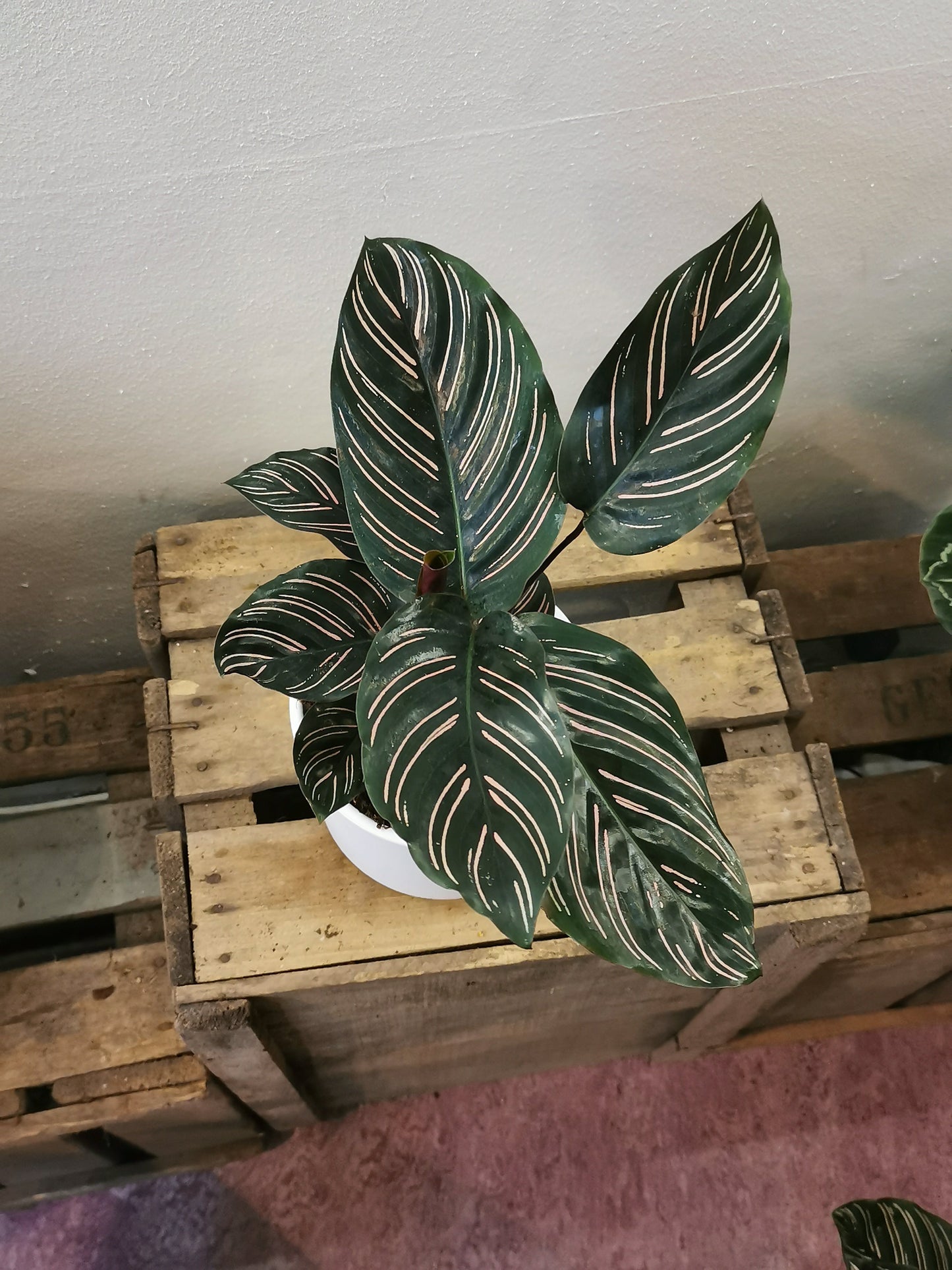
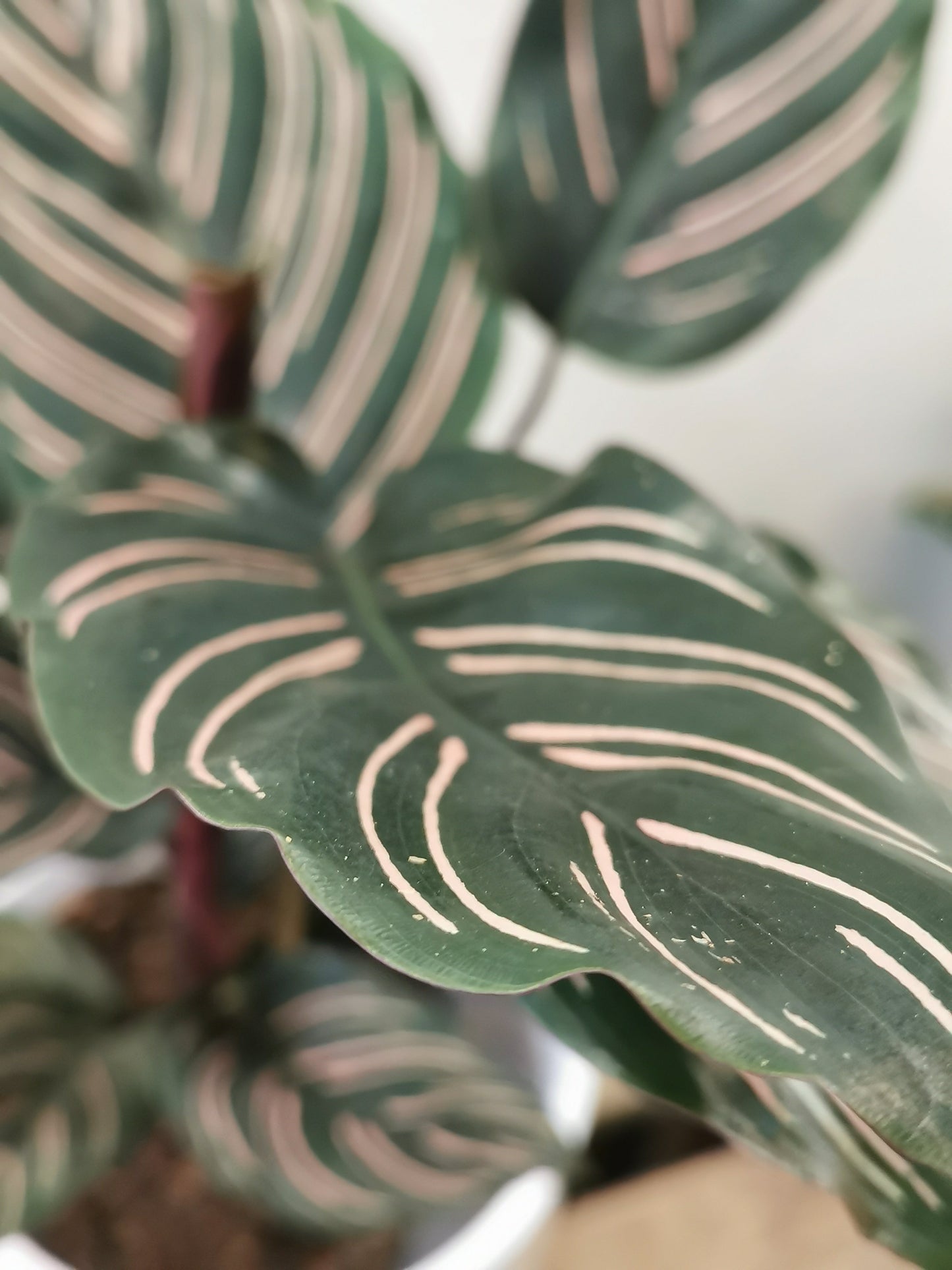
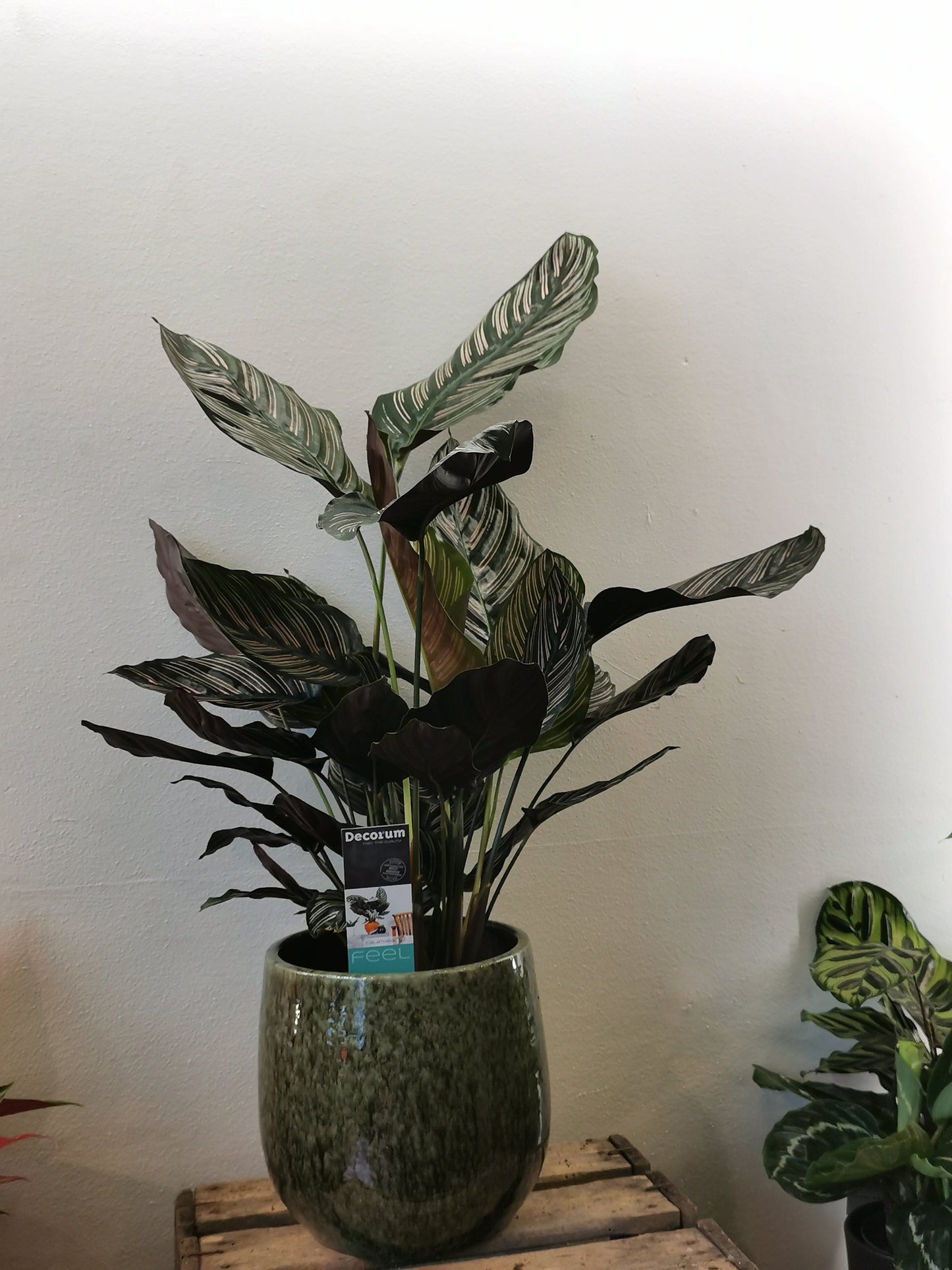

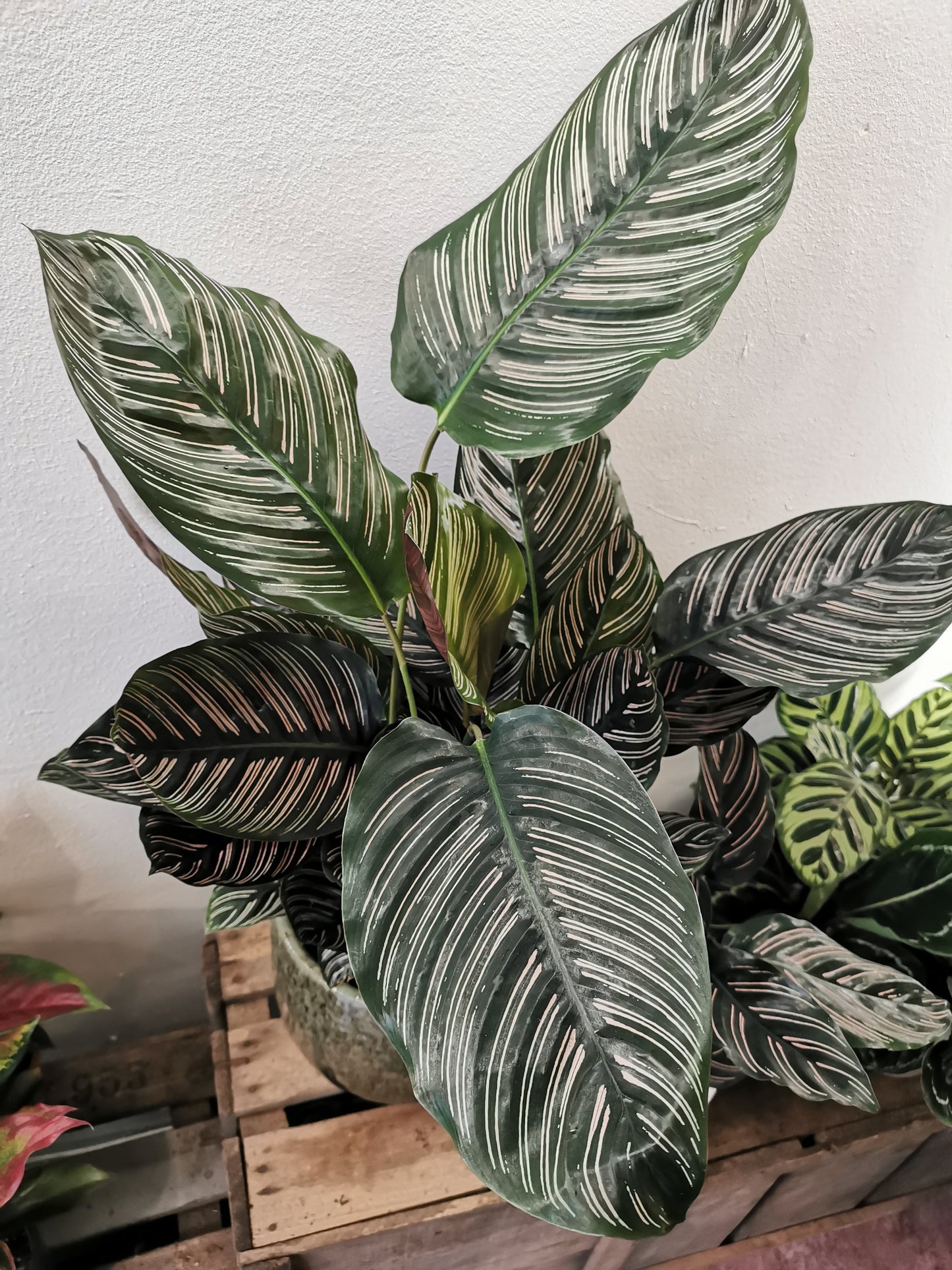
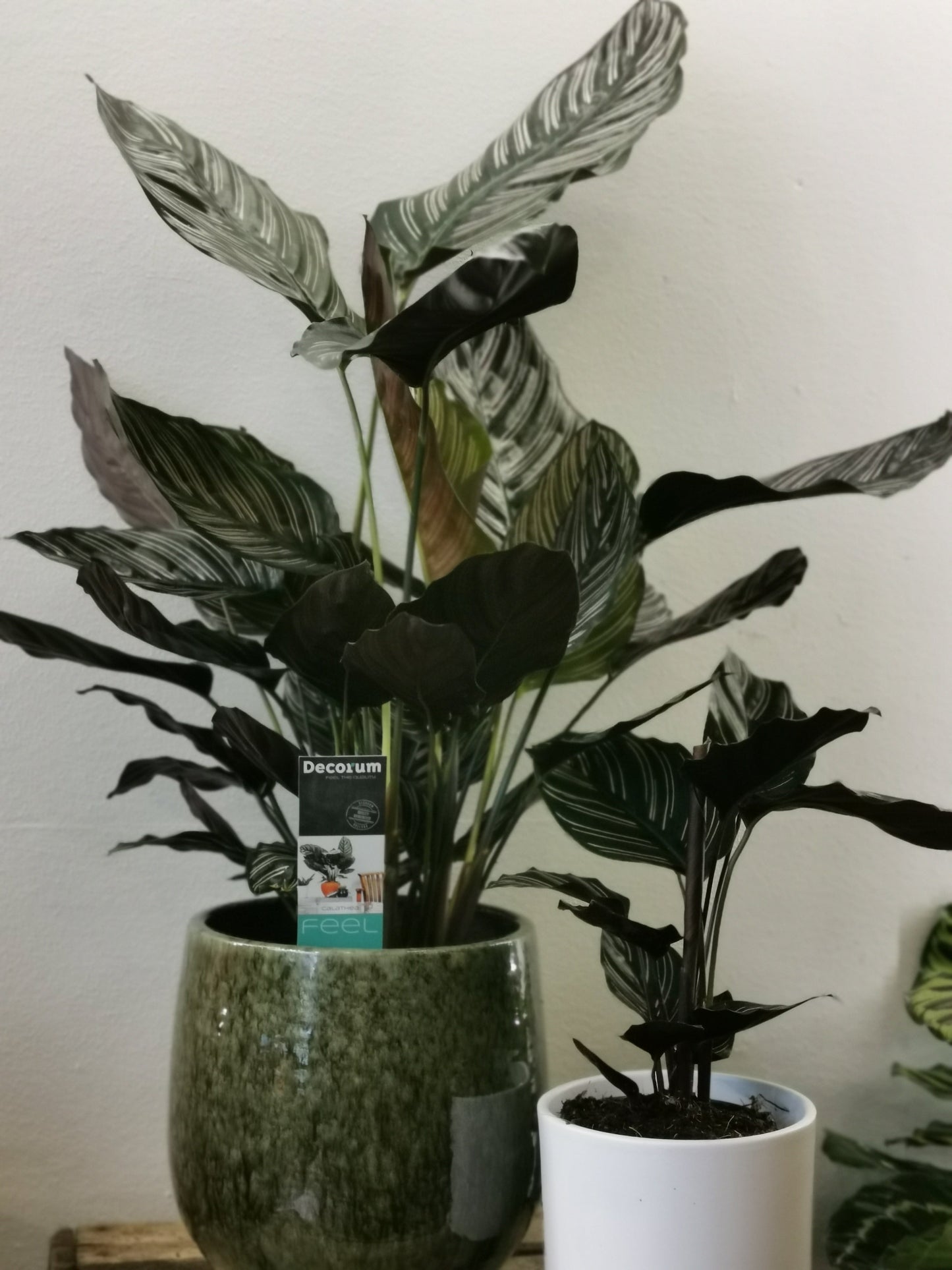
Frequently Asked Questions
How do you ship plants?
We always ship our plants well packaged and safely.
We do not ship on cold days and we also try not to ship during the weekends. This way plants are always in suboptimal conditions for a minimum time.
What is your shipping policy?
You can read our shipping policy here.
What payment methods do you accept?
We accept various payment methods online such as Bancontact, Visa, Mastercard, Paypal.
You can also pay with Ecocheques in our store in Leuven.
Can I return the products?
You can read our returns policy here.
Where do your plants come from?
Our plants always come straight from the grower to our shop. With minimal stops we prevent pests and diseases and keep the chain short!
Collections
-
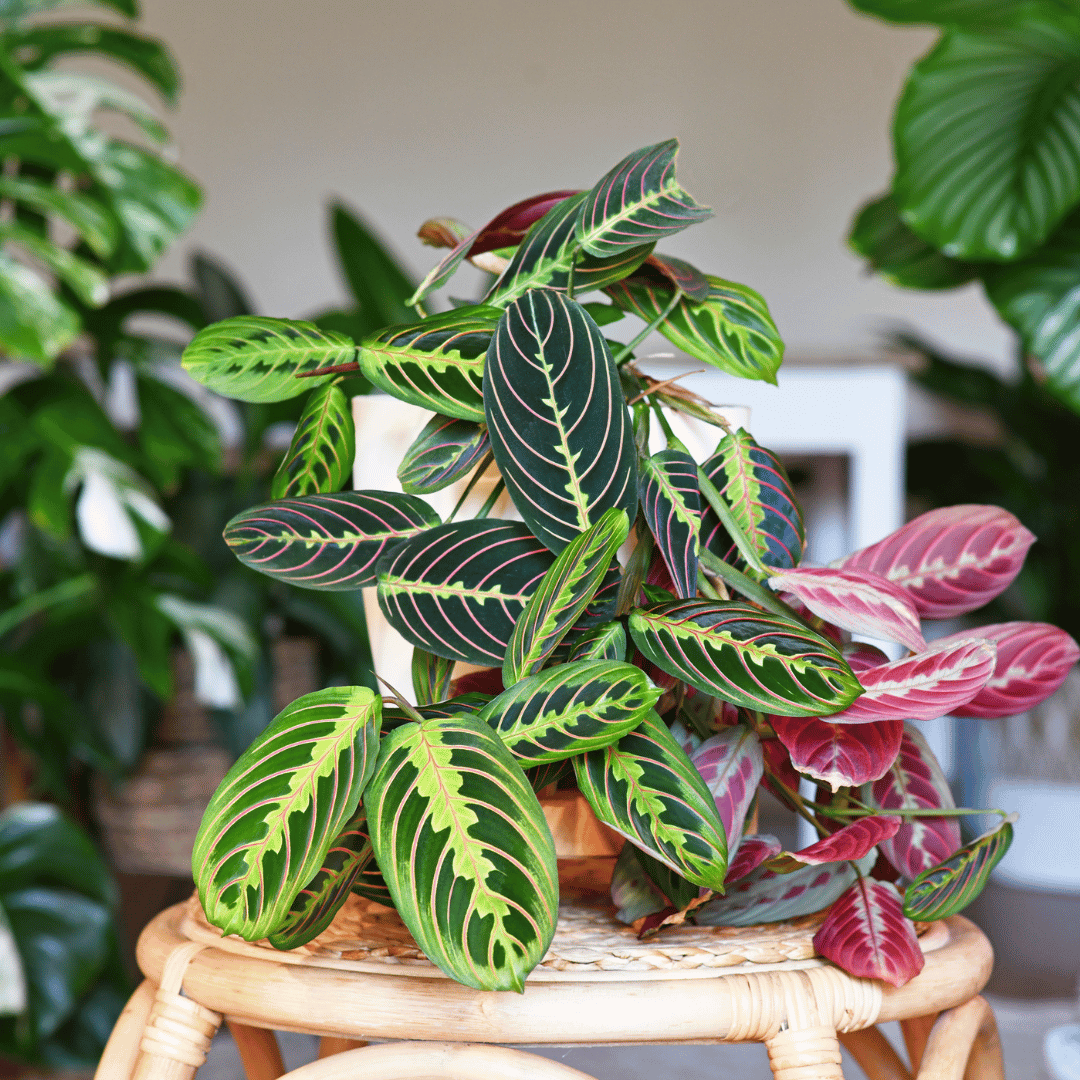
Buy Maranta's
Discover the unique charm of our collection of Maranta plants. With their...
-
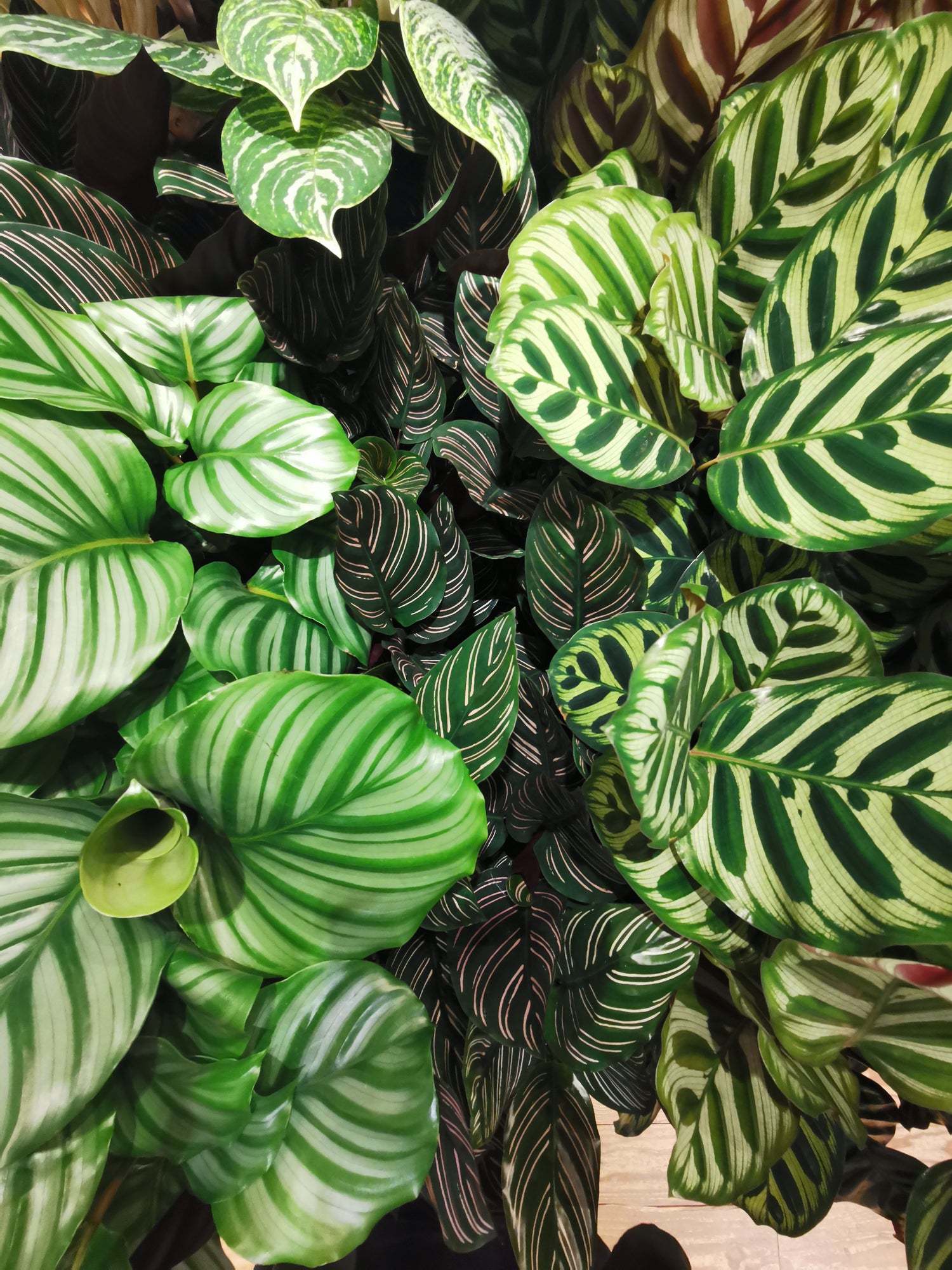
Buy Calathea
Are you looking for a beautiful and unique houseplant that will purify...
-
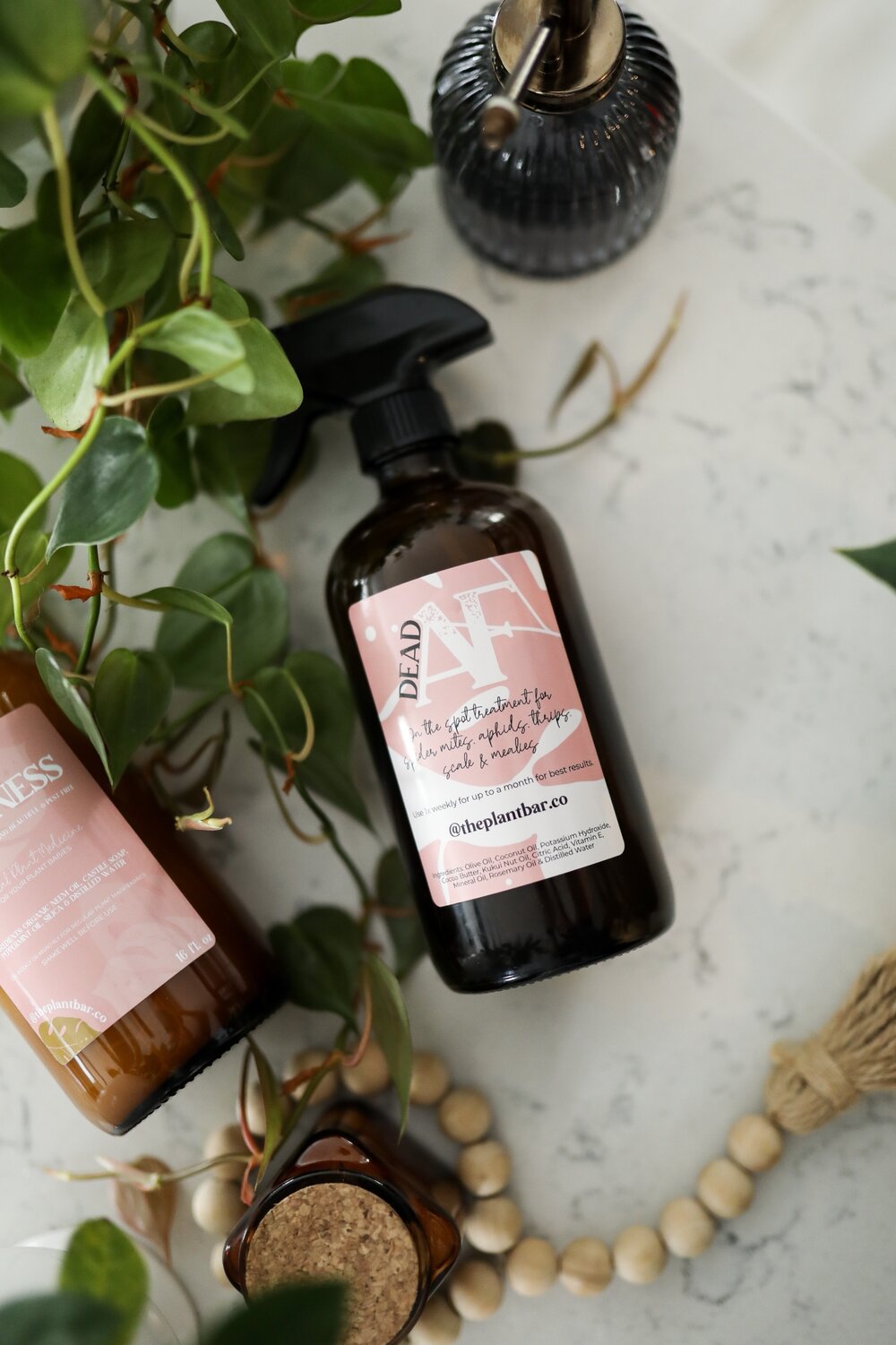
Accessories for Plant Lovers
In our store we have a wide variety of accessories to help...










